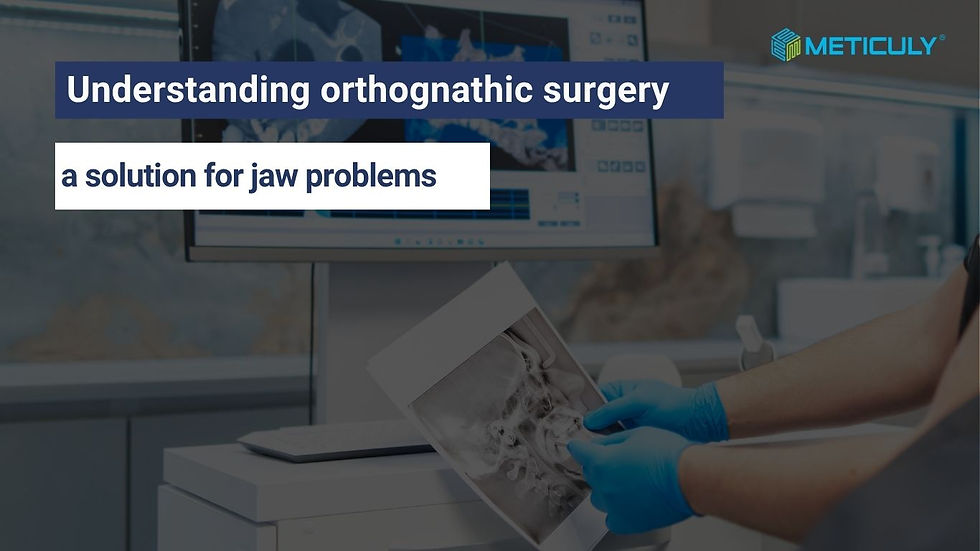The orthognathic surgery: from digital planning to patient-specific implant
- chetarpa yipyintum
- Aug 8
- 3 min read

Orthognathic surgery, often called corrective jaw surgery, is a procedure addressing both critical function and personal identity. It is a specialised field within Oral and Maxillofacial Surgery designed to correct jaw and facial irregularities, restoring a patient's ability to chew, speak, and breathe correctly while creating a natural, balanced facial harmony.
Orthognathic surgery has undergone a transformation over the last two decades. The days of relying on plaster models and 2D X-rays for planning are, for most contemporary surgical practices, a memory. Today, Virtual Surgical Planning (VSP) is rightly considered the standard of care for Orthognathic Surgery. The conversation is no longer about if we should use digital tools, but how we can refine the digital workflow to eliminate the final variables, further enhance efficiency, and achieve an even higher level of predictability. This guide explores the next step in that evolution: the move from a standard digital workflow to a fully integrated, patient-specific approach.
The current standard: virtual planning and 3D-printed surgical guides for orthognathic surgery
The current digital workflow has provided surgeons with unprecedented accuracy. This process typically involves:
A 3D CT scan of the patient's anatomy.
The use of VSP software to simulate the surgery and plan the precise movements of the jaws.
The 3D printing of surgical splints or guides to accurately transfer this virtual plan into the operating theatre.
This has been a leap forward, removing much of the guesswork from the procedure. However, one significant variable often remains: the fixation. The final stage frequently relies on selecting stock titanium plates and manually bending them to fit the patient's newly positioned anatomy during the operation. While a vast improvement on older methods, this intraoperative adaptation is still a source of added time and potential micro-inaccuracies.
Beyond the digital workflow: the patient-specific implant
A fully patient-specific workflow aims to complete the digital chain, ensuring that the precision of the virtual plan is carried through to the final fixation with zero compromise. This approach, pioneered by Meticuly, builds upon the standard digital workflow with two key advancements:
The patient-specific implant for fixation Instead of manually bending a generic plate in theatre, this workflow includes the pre-operative design and 3D printing of bespoke titanium fixation plates. These plates are created from the surgeon's own virtual plan and are contoured perfectly to the patient's target anatomy. They require no bending, no adjustments. This eliminates the final variable, ensuring the planned result is precisely the final result.
A truly integrated workflow. This workflow is more than just a set of products; it is a seamless partnership between the surgeon and a dedicated engineering team. This close collaboration ensures the virtual plan, the surgical guides, and the final Patient-specific implant are all part of a single, validated, and harmonious system, eliminating any potential disconnect between planning and execution.

This advanced workflow is underpinned by the most rigorous quality standards. Every patient-specific implant and guide produced by Meticuly is manufactured in a facility compliant with ISO 13485:2016 and certified by global regulatory bodies, ensuring that cutting-edge innovation is always delivered with uncompromising safety.
The digital revolution gave surgeons the tools to plan perfectly. The next stage of this evolution gives them the tools to execute that plan perfectly, with maximum efficiency and confidence.
For the modern surgeon already leveraging VSP, the move to a fully patient-specific workflow with bespoke implants is the logical next step in refining their practice. At Meticuly, we provide the integrated partnership and technology to make that step seamless, helping the best surgeons in oral and maxillofacial surgery achieve an even higher standard of excellence.



Comments